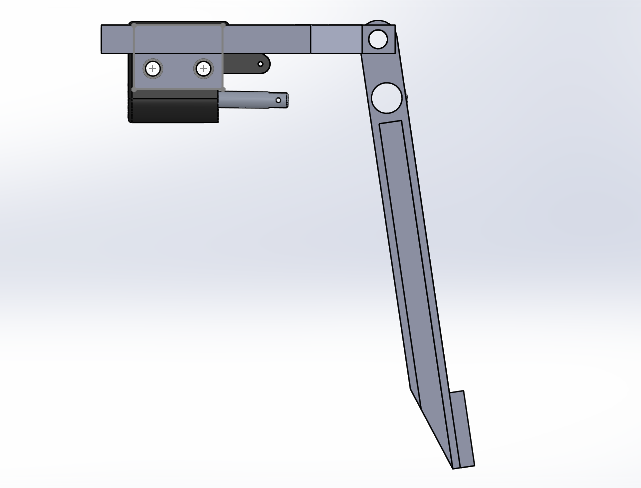By Oscar Ta (Optical Engineering, ’18)
Brakes: Calculations & Part Selection
To stop the rotors is to stop the rotations of the wheels; this is our starting point to backtrace forces to the input force from a driver’s heel. These forces are related to the dimensions of brake components by multiple formulae. To select brake components, we adjust these dimensions to propagate calculations for braking force in the rear and front braking systems. The braking system was designed to these criteria:
1) 60%:40% front-to-rear static braking force distribution
2) contains a biasing mechanism to create a 35%:65% front-to-rear dynamic braking force distribution.
Combined Bias Bar & Brake Pedal
The brake pedal is designed with a pedal ratio of 7.2, which higher than that of the previous year’s manufactured pedal. For packaging efficiency, we modify last year’s design to achieve this higher pedal ratio for the same length pedal. Our modification places the pivot point at a higher position than the output links to the master cylinder. In addition, our output link will have a built-in biasing mechanism. This built-in mechanism consists of a fixed bearing within the pedal and a rotating bolt connected to links, which connect to the master cylinders.
Segmented Steering Column
To increase comfort and decrease egress time, we plan to implement a segmented steering column. A top-segment will be connected to a bottom-segment via a universal joint with yokes at the junction. The top-half of the steering column is currently in design with the steering wheel with the Laird Plastic steering wheel (see below). The bottom-half is also currently in design while selecting rack-and-pinion placement. Currently, we are working on steering effort calculations.
Custom Rear Brake Caliper
As an experimental project for future years, we plan to custom-make calipers. To start, we model the selected rear caliper in CAD. Then it is modified for specific dimensions, such as mounting points, rotor spacing, and bleeding nipple placement. We will determine manufacturability in our next procedure.
Laird Plastic Research
In partnership with Laird Plastics, we plan to manufacture a steering wheel to compare an experimental plastic material versus a steering wheel made of conventional metal. The experimental plastic is projected to have better strength-to-weight as steel. A butterfly steering wheel was designed in CAD and was tested in a preliminary FEA simulation. With the steering effort calculations, we plan to refine our FEA simulation. The next step is to manufacture the steering wheel samples for testing.

